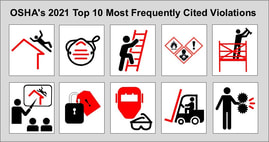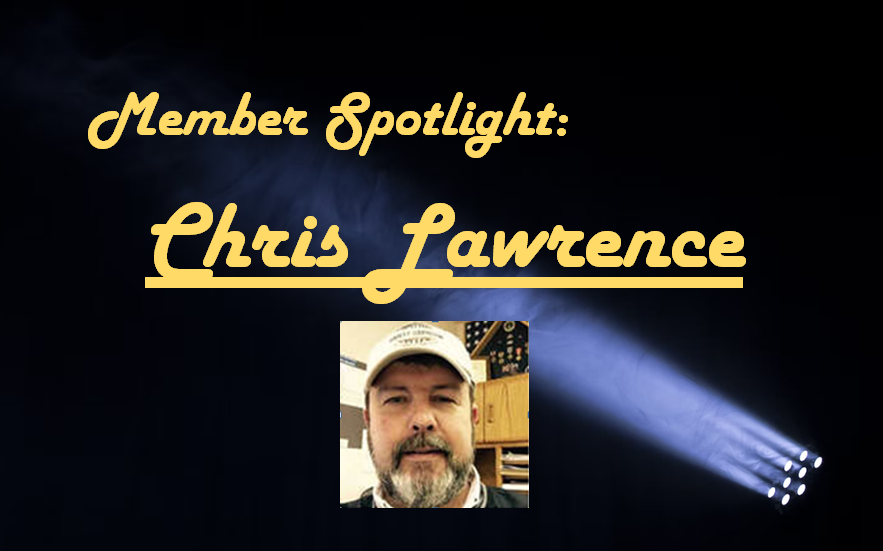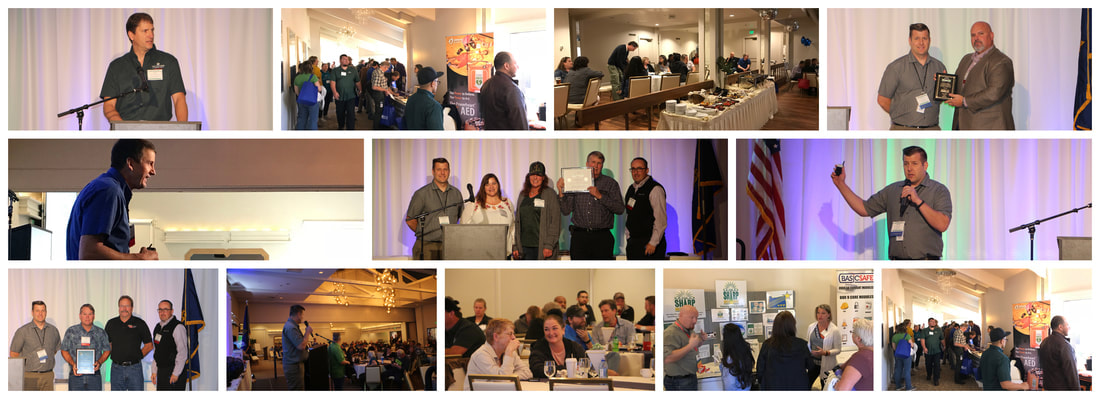
Occupational safety and health have made great strides over the past five decades. Since the signing of the OSH Act in 1970, standards and regulations have been put in place to improve conditions for workers across all industries. However, there is always more work to do to ensure everyone goes home in the same condition as when they arrived.
In 2020, 4,764 fatal occupational injuries occurred in the U.S., according to the Bureau of Labor Statistics. Furthermore, OSHA’s top 10 most cited violations relate to many of the same standards year after year. With all of this in mind, what more can safety professionals do — and what can we as a Society do — to improve workplace conditions?
We recently spoke with President Christine Sullivan, President-Elect Jim Thornton and Senior Vice President Pam Walaski for their perspective on the current state of occupational safety and health, the challenges facing safety professionals, what they’d like to see from OSHA, and how we can continue working together for a safer, stronger future in the coming year.
The Current State of Occupational Safety and Health
ASSP: What are your thoughts on the current state of occupational safety and health?
Sullivan: Since March 2020, workplace safety and awareness of workplace safety has changed significantly. Although workers still need to be kept safe from traditional hazards, COVID-19 has introduced significant new exposures.
In the past, safety professionals were primarily asked to prevent injuries and illnesses in their organizations, but now responsibilities are expanding to nontraditional items like wellness, mental health, and environmental, social, and corporate governance (ESG). Currently, safety is at the forefront for many company executives, but we need to continue to push to be in the C-suite.
Thornton: Safety professionals have helped to reduce workplace injuries, illnesses, and fatality rates over the years. However, despite their dedicated efforts, injury, illness, and fatality rates have recently held steady. The COVID-19 recovery has created even more challenges: the loss of experienced workers, hiring of new workers, transition to remote work, changing of work schedules, and more.
Novel approaches to OSH management are warranted to further reduce injuries and illnesses. We must emphasize and research the human side of safety, including mental health and workplace stress. In my view, this is the new frontier for OSH programs and represents a monumental opportunity to make a difference.
Walaski: Hardly anyone would disagree that the pandemic created significant changes in the way organizations operate. From telecommuting to worker shortages to supply chain disruptions, these changes required and continue to require organizations to pivot quickly. This is especially true regarding how OSH needs are addressed.
However, I believe that a significant evolution of OSH practices has been going on for much longer and has provided a foundation for managing current changes. In the past five to seven years, we have seen an increased awareness of emerging approaches that focus on the role of the organization’s systems to effect change. More people have begun to appreciate how those systems create capacity and resilience to operate effectively under varying conditions.
Approaches like human and organizational performance (HOP) and Safety Differently focus on understanding human behavior in the context of the system, rather than the other way around. Aligning with these systems-based approaches are those which focus on the role of the OSH leader to create an environment that fosters creative problem-solving and a willingness to speak up without fear of reprisal or shame.
The Challenges Facing Safety Professionals
ASSP: What are the greatest challenges facing safety professionals today?
Sullivan: Many safety professionals lack business skills such as effective communication, calculating the return on investment of safety, and demonstrating the impact they have on their organizations. Wellness, mental health, and ESG are emerging issues where safety professionals can have an impact.
Thornton: I have had conversations with safety professionals who say they are having challenges adapting their OSH programs to adjust to new employees entering the workforce as well as senior workers leaving.
But the primary challenge for OSH professionals is to find time for continuing education while keeping their workplaces safe. As we enter our new normal following COVID, OSH professionals will be met with increasing responsibilities and challenges. We must recognize these challenges and find ways to help our members.
Walaski: One is the need to recruit more people to enter the profession. We know that the number of OSH professionals nearing retirement age is high and the number of those entering the profession doesn’t match. Recruitment can take place at the high school level, but finding ways to attract people already in the workforce will be a big part of any targeted endeavor.
We also know that evolving workplaces require new and different approaches to OSH. For example, “blame the worker” approaches are being replaced in organizations that recognize incidents are opportunities to learn. These organizations understand that workers are acting and reacting as part of a system that needs to be understood for real change and improvement to occur.
How Our Community Can Help
ASSP: How can our Society help safety professionals address these challenges?
Sullivan: We need to be quicker and more nimble. For example, Total Worker Health® has been a topic for many years, but we are not there yet. How do we do this faster so we are not overshadowed by other organizations? Many safety professionals don’t understand ESG and how it ties to human capital and the impact they can have in their role. Education is key, but again we need to be nimble.
Thornton: We must use our Advisory Group to identify emerging trends in the workplace so we can develop solid educational programs to help our members. We must deliver these programs in an efficient and effective manner.
We should also teach safety professionals how to implement specific training programs that are tailored to employee experience levels and cultural differences. Customized, targeted training could be a real gamechanger.
Walaski: OSH professionals join this profession by following a variety of paths. We know from our research than more than half of members enter our profession from other disciplines or with degrees other than those with occupational safety and health in their names.
The formation of the ASSP Foundation’s Educational Framework Task Force is a critical step in meeting professionals where they are, when they are ready.
Looking to the Future
ASSP: How do you see work changing, and how can safety professionals adapt to those changes?
Sullivan: Artificial intelligence and data collection will play key roles. COVID pushed us into a remote work environment, and while currently this is focused on office workers, I see more robotics and AI allowing even those in manufacturing to work remotely.
Continuous learning and change will become important. I think you are going to see a need for people who are more like coaches and teachers as work changes, so those are skills safety professionals will need to learn.
Thornton: The workplace is constantly changing and always will. It is critical that OSH professionals stay ahead of trends in this dynamic environment and participate in networking and educational programs that help them effectively manage their programs and better protect workers.
With technological changes moving at the speed of light and the global economy in flux, the future of work is highly unpredictable. It is critical that the Society remain fully committed to monitoring the evolution of work and adapting our strategic plan.
Walaski: Professions and professionals are always evolving, changing, and adapting — and OSH is no different. I am confident that we will continue to learn and be open to new and different ways of leading our organizations. We have become so much more aware of our role as a partner and trusted advisor rather than a “doer.”
Our role as a safety cop or safety officer should be considered outdated, and our role as an engager who helps workers share their knowledge and expertise should be the norm. We should all acknowledge the dignity of work.
What OSHA Can Do
ASSP: What would you like to see from OSHA to help improve conditions for workers?
Sullivan: OSHA needs to reexamine the way it does standards. While standards are important for many organizations, the standards have no impact on where employee injuries are occurring. OSHA needs to use the data they are collecting from companies and do a better job using predictive analytics to focus their efforts on areas where they can make an impact.
Thornton: I think OSHA should require the recognition of qualified safety and health professionals for future regulations. Safety professionals will ensure requirements are properly followed and will be able to provide different control options for regulatory compliance. As a result, many more workers would have a safety professional looking out for their interests.
In addition, I think OSHA ought to consider more frequent use of the “negotiated rulemaking” method of developing OSH standards. Although the moniker carries a negative connotation, the concept is that the agency has the authority to bring affected stakeholders and technical experts together and develop “reasonable-yet-protective” OSH standards.
Walaski: Addressing emerging and changing hazards requires a process that is nimble, so relying on OSHA to promulgate regulations is unreasonable given that its process is part of the OSH Act and unlikely to be modified. However, the approaches and voluntary consensus standards that OSH professionals rely on are based on a model that includes all stakeholders and is revisited on a prescribed basis to be revised or reaffirmed.
I would like to see OSHA find a way to incorporate the required use of OSH professionals who use these standards into some of their activities. Perhaps local area directors who are negotiating with employers for the reduction of fines could require consultation as part of negotiations. In a way, this would expand the use of the consultation programs already in place.



 RSS Feed
RSS Feed
